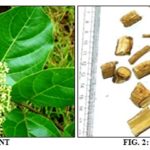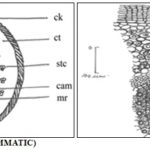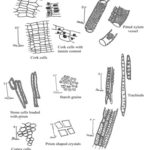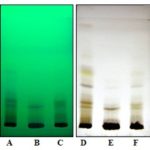PHARMACOGNOSTICAL STANDARDIZATION ON THE ROOTS OF AGNIMANTHA – PREMNA SERRATIFOLIA LINN.
HTML Full TextPHARMACOGNOSTICAL STANDARDIZATION ON THE ROOTS OF AGNIMANTHA - PREMNA SERRATIFOLIA LINN.
M. Prathapa Reddy *, T. R. Shantha, V. Rama Rao, N. Shiddamallayya and Amit Kumar Dixit
Drug Standardization Research Unit, Regional Ayurveda Research Institute for Metabolic Disorders, (CCRAS, Ministry of Ayush, Government of India), Ashoka Pillar, Jayanagar, Bangalore - 560011, Karnataka, India.
ABSTRACT: Present communication deals with the pharma-cognostical standardization on the roots of Agnimantha (Premna serratifolia L. (syn. P. integrifolia L.) belong to the family Verbenaceae. It is an important medicinal plant used in many Ayurvedic formulations. According to Ayurveda the roots and leaves are the most useful parts of the plant. It is one among the Dashamula. Macro, microscopical and physicochemical studies were carried out as per the latest Ayurvedic Pharmacopoeia of India, part-1, volume-8 protocols to establish its Pharmacognostical standards. Studies revealed the presence of abundant, simple to compound starch grains with prominent hilum in the center, cork cells filled with yellowish brown pigmented cells, starch grains in the medullary rays, abundant xylem vessels with bordered pits and tracheids with pits, prism-shaped crystals in the cortex region. Phytochemical studies showed the presence of carbohydrates, alkaloids, phenols, tannins, etc.
| Keywords: |
Agnimantha, Premna serratifolia, Premna integrifolia, Pharmacognosy, Root, Physicochemical
INTRODUCTION: Agnimantha a sanskrit name equivalent to Premna serratifolia Linn. (Synonym P. integrifolia Linn.) is a large, thorny deciduous shrub or a tree, up to 9 m in height, common along the Indian and the Andamans coasts, it also occurs in the plains of Assam and Khasi hills. In Ayurveda, the roots and leaves are the most used parts for many ailments. The roots are considered as an astringent, stimulant, liver tonic, laxative, carminative and antibacterial. Leaves infusion with pepper is useful in cold and fever; leaf sap is useful to alleviate headache 1, 2.
Roots are useful in vitiated conditions of vata, kapha, neuralgia, inflammations, cardiac disorders, cough, asthma, bronchitis, leprosy, skin disorders, dyspepsia, flatulence, constipation, fever, diabetes and anorexia etc. 3 In Vietnamese traditional medicine, the leaves of S. chinensis are used to treat indigestion, dysuria, and dysentery; roots against indigestion, stomach ache and fever 4. The root methanolic extract showed better immunomodulatory activity in experimental mice 5. A paste of its roots with water and butterfat is given in Urticaria 6.
Ayurvedic Description of Properties: In terms of Rsasapanchaka theory of Ayurveda, the properties are as follows: Rasa (taste) - Tikta (bitter), kaṭu (pungent), kaṣāya (astringent); Guṇa (quality) - Rūkṣa (creates dryness), laghu (light for digestion); Vīrya (potency) - Uṣṇa (Hot in potency); Vipāka (digestive effect) - Kaṭu (pungent); Karma (action) - śothahara (Anti-inflammatory), vedanāsthāpana (anodyne or which relieves pain); Doṣaghnatā (effect on doshas) - Kapha-vātahara (Acts against the diseases came due to Kapha dosha and Vata dosha) 7.
As per the 3 volumes of Ayurvedic Formulary of India, more than 40 formulations has been prepared by using Agnimantha as one of the ingredient, some of them are as follows: Amrtarista, Dantyadyarista, Dasamularista, Agastya Haritaki Rasayana, Cyavanaprasa, Brahma Rasayana, Bharngiguda, Dasamula Katutrayakavthacurna, Dasamulakvathacurna, Dasamulapancakoladikav-thacurna, Darunagaradikavthacurna, Rasnadikav-thacurna, Saptasarakavthacurna, Indukanta Ghrta, Dasamulaghrta, Dasamulasaptalakaghrta, Dadhi-kaghrta, Dhanvantaraghrta, Mahapancagavyaghrta, Lasunadighrta, Sukumaraghrta, Dhanvantarataila, Narayanataila, Prabhanjana Vimardhanataila, Brha-tmasataila, Mahanarayanataila, Mahavisagar-bhataila, Sahacaraditaila 8; Brhacchagaladya-ghrta, Guducy-aditaila, Dasamulataila, Madhyama Narayanataila, Musikadyataila, Vajrakapata rasa, Vatagankusa rasa, Sirahsuladivajra rasa 9; Nalikerasava, Dasamularka, Vasisthaharita-kyavaleha, Caturda-sanga-kvathacurna, Tagaradi-kvathacurna, Bhunimbadi Astadasangakavthacurna, Viratarvadiganakavtha-curna etc 10.
Chemical Constituents: Premnacorymboside A, scutellarioside II, quercetin-3-rutinoside, leonuriside A were isolated from the stem bark 4. Alkaloid contents like premnine, ganikarine, premnazole are reported in root from different researchers 5. 1β, 3α, 8β-trihydroxy-pimara-15-ene; 6α, 11, 12, 16-tetrahy-dxy-7-oxo-abieta-8, 1, 13-triene; 2α, 19-dihydroxypri -mara-7, 15-diene were identified in root bark 11. It is known as follows in different Regional languages in India.
- Sanskrit: Agnimantha, Ganiparnika, Jjaya, Vaijayanti, Arani
- Bengali: Bhut-bhiravi
- Gujarathi: Mothi-arni
- Hindi: Agetha
- Kannada: Agnimanda, Eegigida
- Malayalam: Munna
- Tamil: Munnay
- Telugu: Pomantai, Peddanarva, Gaebbunelli;
- Urdu: Arani 1.
MATERIALS AND METHODS: The roots of Agnimantha were collected from Budnal village, Huballi taluk, Dharwad district, Karnataka, authenticated by Survey of medicinal plant unit, Regional Ayurveda Research Institute for Metabolic Disorders, Bangalore. The roots were shade dried; some are pulverized by a mechanical grinder to get the coarse powder and stored in a closed vessel, to carry out microscopical studies, powder studies, physicochemical and preliminary phytochemical analysis as per the standard protocols. Macroscopical, microscopical and powder studies were carried out as per the standard procedures 12, 13.
Hydro-Alcoholic Extract: 100 g of coarse powder was taken in an extractor and mixed with 50% aqueous alcohol, thrice the quantity of raw material and refluxed for 3 - 4 h. The extract was filtered through a Whatman no.1 filter paper. The process was repeated three times, and each time the extract was filtered into the same vessel. The combined filtrates were concentrated to a syrupy consistency and dried by using a rotary evaporator 14.
Water Extract: 100 g of coarse powder was taken in an extractor and was added with thrice quantity of distilled water and heated at a temperature 80 °C for 3-4 h. The extract was filtered through a Whatman no. 1 filter paper. The process was repeated three times, and each time the extract was filtered into the same vessel. The combined filtrates were concentrated to a syrupy consistency and dried using a rotary evaporator 14.
Thin Layer Chromatography: Shade dried roots coarse powder was extracted with methanol, water-alcohol, and water by reflux method. TLC studies of these extracts were carried out by using, commercially available pre-coated plates at room temperature by following standard procedures 14.
Physicochemical Analysis: The powdered drug was used to carry out various physicochemical parameters such as total ash, acid-insoluble ash, loss on drying at 105 °C, water soluble and alcohol soluble extractive values. The water and water-alcoholic extracts were dried and subjected to various tests like total ash, acid-insoluble ash, pH of aqueous solution and total soluble solids as per the latest Ayurvedic Pharmacopoeia of India protocols 14.
Preliminary Phytochemical Analysis: The powdered drug was extracted with water, alcohol and petroleum ether and methanol for carrying out different preliminary phytochemical tests for alkaloids, carbohydrates, proteins, phenols, tannins, saponins, starch, flavonoids, and steroids, etc. by using Standard testing protocols 15, 16.
RESULTS AND DISCUSSION:
Macroscopic Characteristics: Roots light brown or yellowish brown, woody, 6 - 8 cm long and 4 - 5 mm in diameter, brown from outside and yellow from within, having a short fracture. Roots contain yellow pigment tannin. Roots are light brown, woody, branched and cylindrical. The outer surface is exfoliated at some places and shows longitudinal striations and wrinkles. Roots possess bland taste and are slightly aromatic, woody, branched and tortuous to cylindrical. The surface gets exfoliated easily and shows prominent longitudinal striations and wrinkles Fig. 1 and 2.
Microscopic Characteristics: The transverse section shows cork, consisting of 8-10 rows of tangentially elongated and radially arranged suberised cells. Cork is followed by cortex made up of 10-15 layers of thin-walled parenchymatous cells, closely arranged with little intercellular spaces. Cortex shows two to three discontinuous layers of stone cell that are thick-walled, lignified and lodged with prisms of calcium oxalate. A few cortical cells contain yellowish brown pigment.
Phloem shows thin-walled cells, and in between the phloem cells, stone cells with prisms of calcium oxalate crystals are present. The xylem vessels are of varying size, lignified, found isolated or in the group of 2 - 3. Medullary rays are 2 - 3 seriate and the cells are pitted and lignified. Starch is present in the medullary ray cells Fig. 3.
FIG. 3: MICROSCOPY OF PREMNA SERRATIFOLIA LINN. Ck: cork, Cam: cambium, ct: cortex, mr: medullary ray, ph: phloem, prc: prismatic crystal of calcium oxalate, stc: stone cell, sg: starch grains, xyv: xylem vessel.
Powder Microscopy: Powdered root is light brown, with a slightly aromatic and bland taste. Starch is abundant, simple, spherical and cup-shaped. Stone cells are rectangular to oblong and lodged/ loaded with 3 - 8 prisms of calcium oxalate which are found scattered also. The vessels and fibers of the xylem are lignified and found in the groups of interlocking cells. The xylem vessels show bordered pitted thickenings Fig. 4.
Diagnostic Characters:
- Presence of abundant starch grains in the cortex region.
- Presence of prism-shaped crystals and stone cells in the cortex region.
- Presence of yellowish brown pigmented cells in the cork region.
- Presence of starch grains in the medullary ray cells.
- Presence of abundant xylem vessels with bordered pits.
FIG. 4: POWDER STUDY OF P. SERRATIFOLIA L.
Physicochemical Analysis: Physicochemical parameters such as total ash, acid-insoluble ash, loss on drying at 105 °C, water soluble and water-alcohol soluble extractive values were carried out, and results were given in Table 1.
The water and water-alcoholic extracts were dried and subjected to various tests like total ash, acid-insoluble ash, pH of aqueous solution and total soluble solids as per the latest Ayurvedic Pharmacopoeia of India protocols and results were given in Table 2.
TABLE 1: PHYSICOCHEMICAL PARAMETERS P. INTEGRIFOLIA LINN. ROOT POWDER
| Name of the parameter | Values (%) w/w |
| Description | Light brown coarse powder |
| Loss on drying at 105 °C | 6.23 |
| Total ash | 10.18 |
| Acid-insoluble ash | 1.25 |
| Water-soluble extractive | 15.79 |
| Alcohol-soluble extractive | 6.05 |
| Water-Alcohol (50:50) soluble extractive | 9.86 |
TABLE 2: PHYSICOCHEMICAL PARAMETERS OF P. SERRATIFOLIA L. ROOT POWDER EXTRACTS
| Name
of the parameter |
Values (%) w/w | |
| Hydro-alcoholic extract | Water
extract |
|
| pH (5 % w/v aq. solution) | 5.05 | 4.85 |
| Loss on drying at 105 °C | 9.38 | 10.86 |
| Total ash | 5.97 | 13.28 |
| Acid-insoluble ash | 0.25 | 0.20 |
| Total soluble solids | 95.39 | 92.93 |
Pre-liminary Phytochemical Analysis: Pre-liminary phytochemical analysis has been carried out for alkaloids, carbohydrates, proteins, phenols, tannins, saponins, starch, flavonoids and steroids, etc and the results were given in Table 3.
TABLE 3: PRELIMINARY PHYTOCHEMICAL TESTS FOR DIFFERENT EXTRACTS OF P. SERRATIFOLIA L. ROOT
| Natural product group | Test for natural
products |
Presence (+) / Absence (-) |
| Alkaloids | Dragendorff’s test | + |
| Hager’s test | + | |
| Mayers’s test | + | |
| Wagner’s test | + | |
| Carbohydrates | Anthrone test | ++ |
| Benedict’s test | ++ | |
| Fehling’s test | ++ | |
| Molisch’s test | ++ | |
| Flavonoids | - | + |
| Phenols | Ferric chloride test | + |
| Lead acetate test | + | |
| Proteins | Biuret’s test | + |
| Millon’s test | + | |
| Saponins | - | + |
| Steroids | Salkowski reaction | - |
| Tannins | Ferric chloride test | + |
| Lead acetate test | + |
Thin Layer Chromatography: Thin Layer Chromatography was carried out on a precoated silica gel 60254 plates. Few drops of test solution applied on a TLC plate as a band. Developed the plate to a distance of 8 cm from the line of the application by using hexane: ethyl formate (8:2) as mobile phase (solvent system). Dried the plate in air and examined under 254 nm, recorded the Rf values. Sprayed the TLC plate with 10% sulphuric acid reagent. Heated the plate at 110 °C for about 5 min and recorded the Rf values. The chromatogram obtained with powder test solution shows major Rf values under UV-254nm ~ 0.06, 0.175, 0.21, 0.30, 0.56 and after spraying at ~ 0.06, 0.175, 0.21, 0.30, 0.375, 0.50, 0.56, 0.93. The hydro-alcoholic extract test solution shows major Rf values under UV-254 nm at ~ 0.06, 0.175, 0.21 and after spraying at ~ 0.06, 0.175, 0.21, 0.375. Water extract test solution shows major Rf values under UV-254 nm at ~ 0.21 and after spraying at ~ 0.06, 0.21 Fig. 5.
FIG. 5: THIN LAYER CHROMATOGRAPHY. A: Powder ext., B: water ext., C: Wat. - Alc. ext. under UV254 nm; D: Powder ext., E: water ext., F: Wat - Alc. ext. after spraying with 10% H2SO4).
CONCLUSION: Agnimantha is an important Ayurvedic drug used in several Ayurvedic preparations. Studies carried out on the roots of Agnimantha - Premna integrifolia Linn. helps in the identification/authentication of different species of P. integrifolia and also different sources of Agnimantha. Since, agnimantha is also used under different botanical names like Clerodendrum phlomidis Linn. f., belonging to the same family Verbenaceae, this type of studies helps in differentiating the other sources of agnimantha, which will be more useful for researchers, students and Ayurvedic Physicians for identifying the correct drug and it may also be included in the Ayurvedic Pharmacopoeia of India.
ACKNOWLEDGEMENT: Authors are thankful to the Director General, CCRAS, New Delhi for giving encouragement and facilities to carry out the work successfully.
CONFLICT OF INTEREST: Nil
REFERENCES:
- Kirtikar KR and Basu BD: Indian Medicinal Plants. Lalith Mohan Basu, 49-Leader Road, Allahabad, India, Edition 2nd, Vol. 3, 1994; 1927-1929.
- Kapoor LD: CRC Handbook of Ayurvedic Medicinal Plants- Herbal Reference Library, CRC Press, Boca Raton, London, Newyork, Washington DC, 2001; 70.
- George KV, Samuel KA, Abraham J and George BP: Investigations on Bioactive compounds of Premna integrifolia Aryavaidyan 2003; 16(4): 234-239.
- Hang NTB, Ky PT, Minh CV, Cuong NX, Thao NP and Kiem PV: Study on the chemical constituents of Premna integrifolia Nat Prod Commun 2008; 3(9): 1449-52.
- Gokani RH, Lahiri SK, Santani DD and Shah MB: Evaluation of the immunomodulatory activity of phlomidis and Premna integrifolia root. International Journal of Pharmacology 2007; 3(4): 352-6.
- Singh MP: Wild Medicinal Plants. Daya Publishing House, New Delhi, 2011; 228-9.
- Sharma PV and Vijnana D: Chaukambha Bharati Academy, Varanasi, Edition Reprint, Vol. 2, 2009; 221.
- Anonymous: The Ayurvedic Formulary of India. Department of Indian Systems of Medicine and Homoeopathy, Ministry of Health and Family Welfare, Govt. of India, Edition 2nd revised, Vol. 1, 2003; 1-488.
- The Ayurvedic Formulary of India. Department of Indian Systems of Medicine and Homoeopathy, Ministry of Health and Family Welfare, Government of India, Vol. 2, 2000; 1-427.
- Anonymous: The Ayurvedic Formulary of India. Department of Ayush, Ministry of Health and Family Welfare, Government of India, Vol. 3, 2011; 1-710.
- Yadav D, Tiwari N and Gupta MM: Simultaneous quantification of diterpenoids in Premna integrifolia using a validated HPTLC method. J Sep Sci 2011; 34: 286-91.
- Trease GE and Evans WC: Pharmacognosy. Elsevier Publications, Edition 15th, 2008; 513-548.
- Anonymous: Quality Control Methods for Medicinal Plant Materials, World Health Organization (WHO), Geneva, 1998; 1-37.
- Anonymous: The Ayurvedic Pharmacopoeia of India, CCRAS, Department of Ayush, M/o Health and Family Welfare, Govt. of India, Part-I, Vol. 8, 2011; 190-223.
- Reddy PM, Rao RV, Shantha TR, Kumar KR, Shiddamallayya N and Bhat S. Phytochemical analysis and Thin Layer Chromatography of Clausena dentata (Willd.) Roem. Leaf. World Journal Pharmacy and Pharmaceutical Sciences 2016; 5(9): 1706-16.
- Anonymous: Physicochemical standards of Unani formulations, Part-IV, Central Council for Research in Unani Medicine (CCRUM), Department of Ayush, M/o Health and Family Welfare, Government of India, New Delhi, 2006; 157-160.
How to cite this article:
Reddy MP, Shantha TR, Rao VR, Shiddamallayya N and Dixit AK: Pharmacognostical standardization on the roots of agnimantha - Premna serratifolia Linn. Int J Pharmacognosy 2018; 5(7): 426-30. doi link: http://dx.doi.org/10.13040/IJPSR.0975-8232.IJP.5(7).426-30.
This Journal licensed under a Creative Commons Attribution-Non-commercial-Share Alike 3.0 Unported License.
Article Information
8
426-430
616
1253
English
IJP
M. P. Reddy *, T. R. Shantha, V. R. Rao, N. Shiddamallayya and A. K. Dixit
Regional Ayurveda Research Institute for Metabolic Disorders, (CCRAS, Ministry of Ayush, Government of India), Ashoka Pillar, Jayanagar, Bangalore, Karnataka, India
prathapanadri@gmail.com
01 March 2018
16 April 2018
17 June 2018
10.13040/IJPSR.0975-8232.IJP.5(7).426-430
01 July 2018







